Shaking Hands… and Sportsmanship
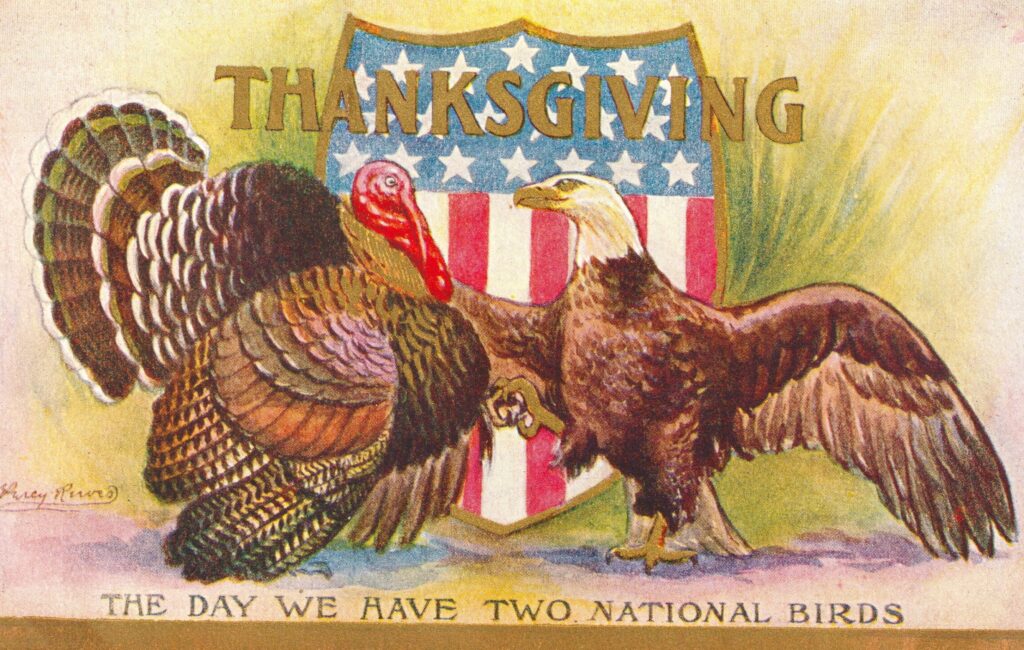
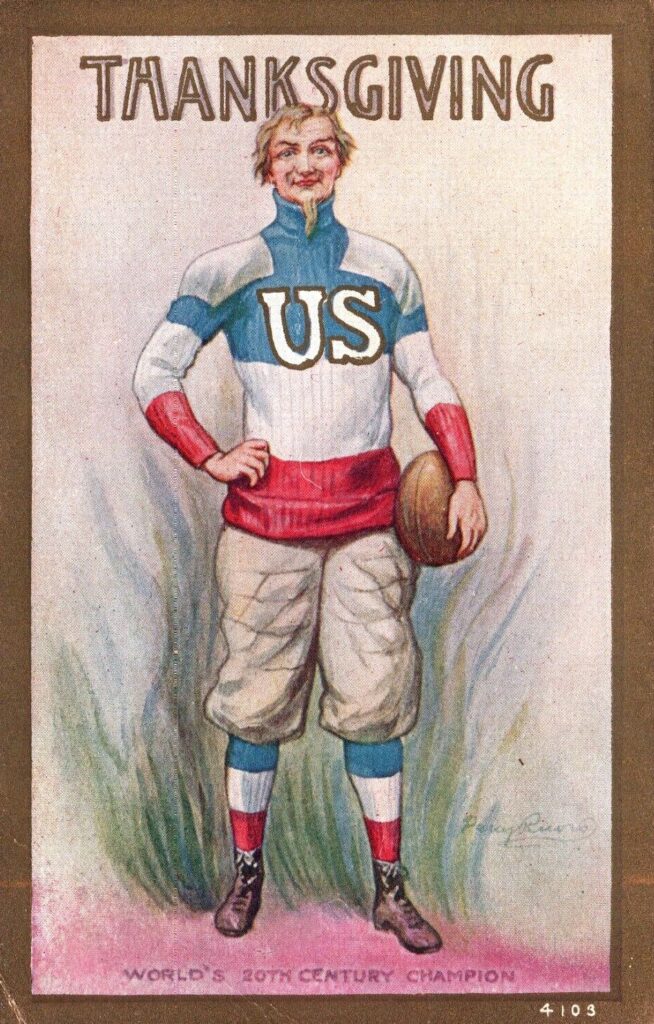
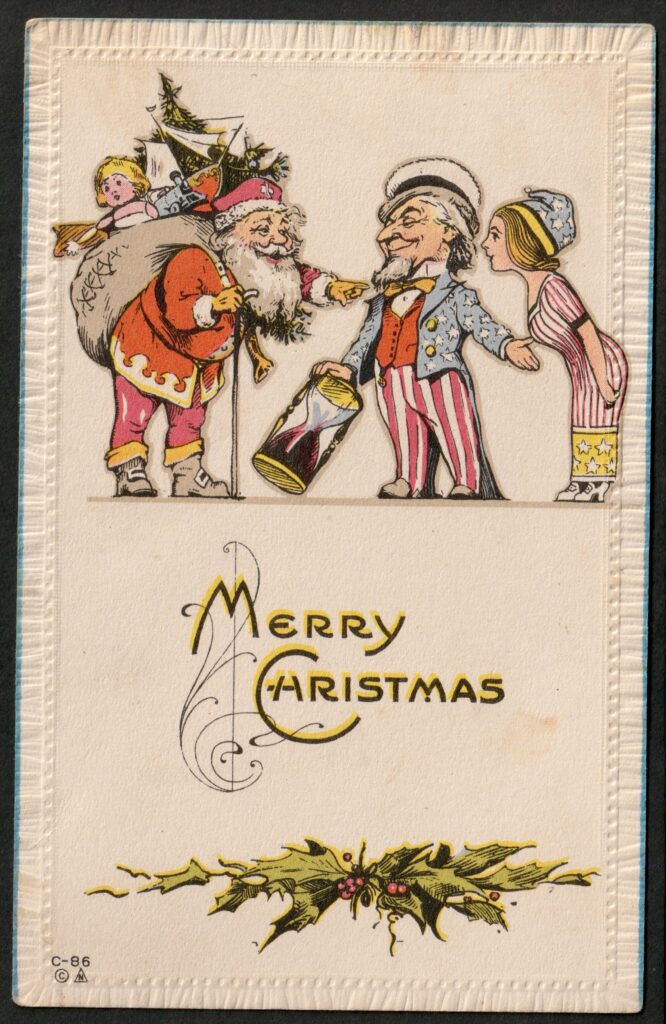
Category: Uncategorized



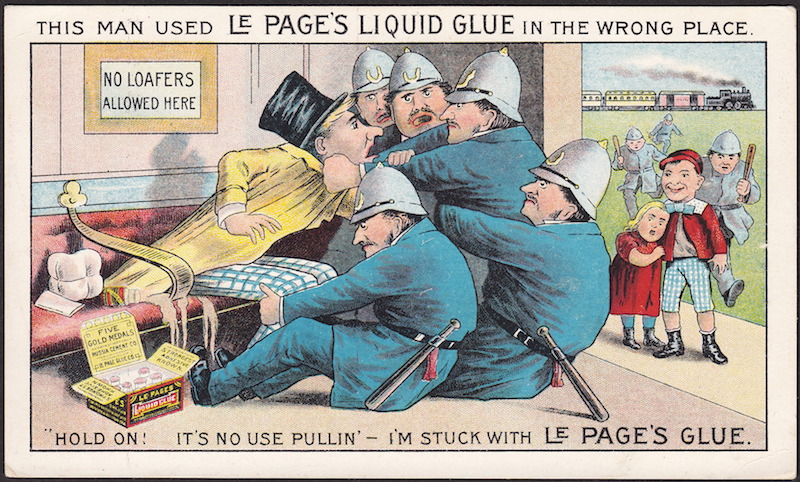
Victorian trade cards are illustrated business advertising cards from the 19th Century.
Typically printed in multiple colors, these cards were freely distributed to promote goods and services through images and text designed to be so informative, so clever, or so attractive that consumers would have a hard time throwing the ad away.
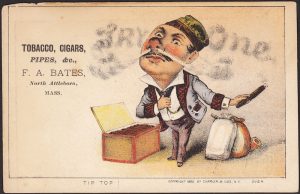
The “Golden Years” for American advertising trade cards began with their explosion in popularity as free exhibit souvenirs from vendors at the 1876 Centennial Exposition in Philadelphia. The Golden Years for Victorian trade cards ended around 1901.
In 1876, the American Industrial Revolution was hitting full steam. Innovators and manufactures were developing new products, and they were eager to showcase their goods and explain the benefits of their brands in the most spectacular and memorable ways possible.
Full-color Victorian trade cards fit the bill perfectly.
In an age dominated by stark black and white photography and one-ink letter presses, the rainbows of colors and extravagances in chromolithographed images made Victorian trade cards an instant hit.
Most of the early cards were produced by well-established lithographers in Philadelphia, Boston, and New York, but as the popularity of Victorian trade cards mushroomed, other printers began setting up color presses and producing them in virtually every major city in America.
By the time of the 1893 Chicago World’s Fair and Columbian Exposition, a business could hardly be considered respectable if it was not issuing cards worthy of a collector’s album.
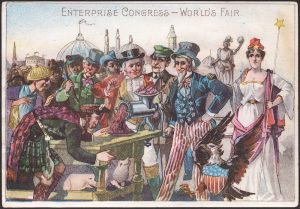
Major lithographers like Ottmann of New York landed the biggest printing contracts with national firms like Hires Root Beer and the Singer Sewing Machine Company, who placed orders of hundreds of thousands of cards at at time.
But there was plenty of business for everyone, large or small.
In remote villages, print shops joined the action by customizing cards to their handful of stores on Main Street. These shops would purchase thousands of assorted color “stock cards” from the big cities. Stock cards arrived in bulk with blank areas for the imprinting local business names and addresses, as well as any requested advertising text that could fit in the remaining space.
Stock cards could be imprinted one-by-one using inexpensive card presses which were sold mail order for just such purposes. In small town press rooms, or even in the basement of a dry goods store, a store name and address could be applied by means of a rubber stamp.

By the 1880’s, collecting Victorian trade cards had become a national craze.
Articles were written about the proper way to trim the margins off advertising cards so the distraction of white borders would be eliminated when a card was pasted into a scrapbook.
Discussions were held on the merits of mounting cards with flour pastes rather than with leather glues. Etiquette essays were written to instruct refined young women how to cluster their cards in themes, as well as how to select certain types of albums to reflect the highest possible level of sophistication. Children competed with neighbors to see who could fill the most parlor albums the quickest, but parents got in on the fad as well.
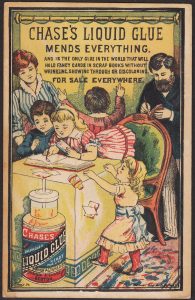
Mothers would help the wee ones with their collecting, and in many cases, the scrapbook became as much the mother’s project as anyone’s.
Men began seriously collecting cards in the 1880’s when tobacco companies started issuing sports cards, joke cards, and actress cards with men in mind.
(Tobacco insert cards evolved into a genre of their own. More on that in a future blog.)
Victorian trade cards were often placed in stacks on store counters, free for the taking.
Other times they were passed out by salespeople on the sidewalk.
They could even be found packaged as “prizes” inside coffee tins or boxes of soap.
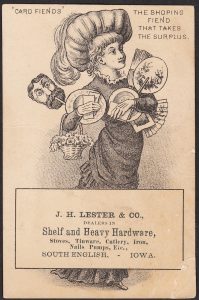
To exploit increasing demand, book stores started buying batches of cards to sell to collectors.
Collectors began writing to companies for free samples, or even sending money directly to printers to purchase large assortments of cards before (or sometimes after) the ads were applied.
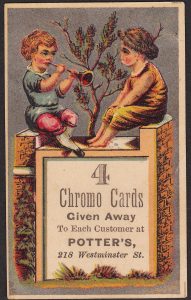
By the mid-1880’s, Victorian trade cards were being distributed and collected from coast to coast, from affluent urban centers to rural farm villages and remote mountain mining camps.
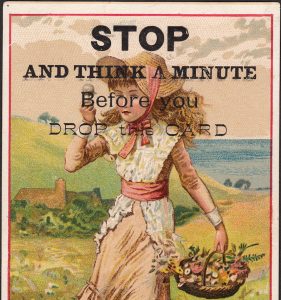
The prestige of trade cards tapered off dramatically after the Buffalo, New York, Pan-American Exposition World’s Fair of 1901.
By the arrival of the 1900’s, colorful magazine ads were on the rise, and the new fad of collecting postcards was taking the nation by storm. For the “modern” young people of the new century, assembling and organizing hand-addressed postal cards was all the rage. Filing and shuffling their exotic treasures in the slotted black pages of post card albums made gluing Victorian trade cards seem messy, and more like something “old-fashioned” only their mothers would do.
Queen Victoria ruled the UK from 1837 until she died of old age in 1901.
It seems fitting that as the Victorian era passed away and made room for the innovations of the 20th century, so, too, did Victorian trade cards fade away and yield their preeminence to modern advertising and the new cards that became in many ways the equivalent of Twitter and Selfies today.
But more on the transition from trade cards to postcards will be covered in a future blog.
Again, as always, all the BEST to you… and Good Collecting! — Dave Cheadle